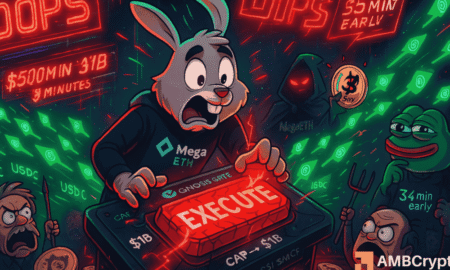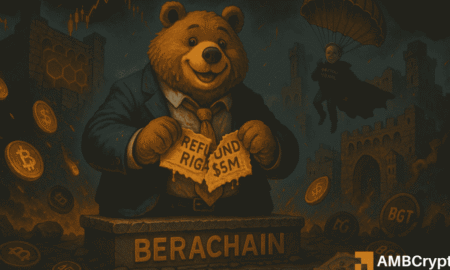Cardano’s Recent Sell-Off: An Analysis of the Partition Event and Its Implications
In the world of cryptocurrency, few have captured the attention of investors quite like Cardano (ADA). However, recent developments have raised serious concerns about the network’s stability and future prospects. Throughout the latter part of 2023, specifically Q4, Cardano has experienced a staggering 50% decline in value, placing it among the worst-performing major cryptocurrencies. This downturn has resulted from various factors, with a significant trigger being a recent rare partition event that exposed intrinsic vulnerabilities within the Cardano network.
Understanding the Partition Event
The rare partition event that transpired on Cardano’s blockchain was a major catalyst for its recent sell-off. This event was not a minor glitch; it disrupted decentralized finance (DeFi) activity, affected stake pool operators, and ultimately damaged stakeholder confidence. Cardano’s founder, Charles Hoskinson, addressed the issue through public statements, underscoring the severity of the disruption, stating, "it will take weeks to clean up this mess." The partition event highlighted a split in Cardano’s blockchain history, which raised questions about its technical stability and resilience—issues that many believed were already being scrutinized before the incident.
The Bearish Trend of ADA
Cardano has exhibited a bearish trend since peaking in mid-August above $1. By the time the partition event occurred, ADA was in a precarious position, even as bullish investors struggled to defend crucial support zones. The October crash further eroded stakeholder confidence, pushing ADA back to pre-election price levels. In an already fragile market environment, even minor triggers—such as the recent partition event—could lead to major sell-offs, reflecting the sensitivity of ADA’s price to any negative news.
The Market Reaction
The market’s reaction to the partition event was mixed. While Hoskinson attempted to downplay the incident as a mere glitch, many market participants regarded it as a revealing catalyst that highlighted underlying vulnerabilities in Cardano’s blockchain. This discord between the management’s view and market sentiment further exacerbated the situation, as confidence in ADA weakened drastically. The community’s scrutiny following the partition event has created a palpable sense of uncertainty, leading to debates about Cardano’s long-term viability.
Weak Fundamentals and Technical Fragility
Cardano’s technical resilience is under intense scrutiny, especially in light of the recent partition event. On-chain data indicates severe weaknesses; for example, according to Token Terminal, ADA’s 30-day trading volume has plummeted by 25%, and network fees have declined by 22%. These metrics reflect a network that was already struggling before the partition incident. Analysts have raised alarms about ADA being overvalued, suggesting that a further drop—potentially up to 5× its current price—might be necessary to align its fundamental value with market perceptions.
Potential Price Collapse
In the scenario where another significant downturn occurs, ADA could fall to around $0.08, marking a drastic price collapse. This potential downward trajectory is alarming for stakeholders who have already seen their investments diminish during Q4. The implications are substantial, as such a major decline could deter future investments and bolster a negative reputation that Cardano is currently trying to overcome.
Future Outlook
The consequences of the partition event and the broader sell-off raise important questions about Cardano’s future. As investors grapple with the uncertainty surrounding ADA’s price and technical stability, it is essential to consider both short-term and long-term implications. If Cardano can address the vulnerabilities exposed during the partition event and regain stakeholder confidence, there may be potential for a recovery. However, unless substantial improvements are made to the network’s fundamental aspects, Cardano risks further deterioration. The community’s ongoing scrutiny and market dynamics will ultimately dictate the future of ADA in the highly competitive cryptocurrency landscape.
By focusing on technical resilience, market sentiment, and critical vulnerabilities, stakeholders can better navigate the complexities surrounding Cardano’s performance and make informed decisions in this volatile environment.
















